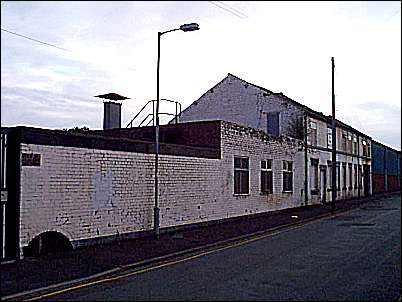Shelton and the Ridgway Family
Brickworks, Norfolk Street, Shelton
Location 4 on
the index map
![]()
![]()
![]()
next: is the Glassworks
previous: was the Norfolk Inn
Pinfold Meadow
Development of this area:
This area of Shelton was, in the early 19th C., known as Pinfold Meadow and the property of John Baddeley. It was a 10½ acre field east of Howard Place and north of the Caldon canal.During the late 1830's or early 1840's the field was bought by John Ridgway of Cauldon Place. By 1849 houses had been built fronting Howard Place and on the south side of Norfolk Street. The commissioner for the General Board of Health in London noted:
'Deserving of particular notice is the row of cottages, belonging to John Ridgway, Esq., rents £10 per annum. The back yards are paved with brick and each house has a wash-house and a separate privy, and a small garden; all is clean and comfortable.' (Robert Rawlinson 1850)
In May 1851 arrangements were made for the development of the rest of the field by the formation of the Cauldon Place Building Society. The architect who drew up the place for the Building Society was Henry Ward (who, amongst other buildings, designed Stoke Town Hall), he also (December 1852) produced the building plan for the development of the Pinfold estate in the form of four streets, laid out at right angles from Snow Hill and Howard Place: Norfolk Street, Chatham Street, Wellington Street (now Wellesley Street) and Richmond Place (which is now Richmond Terrace).
Robert Scrivener
Robert Scrivener played a much more prominent role then Henry Ward in the development of the estate.

Location of Robert Scrivener's brickworks in
Norfolk Street
Robert Scrivener (1812-78) was the son of William Scrivener (carpenter and master builder of Ipswich). Robert served an apprenticeship and set up as a master carpenter, working in Ipswich.
By the early 1850's he had moved to Hanley and set himself up as a brickmaker on the site shown in the photo above, between the Caldon canal and Norfolk Street. He was a member of the Bethesda Methodist New Connexion Chapel in Albion Street, Hanley. He was a Sunday School teacher, the Girl's School Superintendent and eventually a chapel trustee.
on Methodist New Connexion
In the mid 1850's Robert Scrivener had set himself up as an architect and surveyor. His part in the development of Pinfold was largely as a result of his involvement with Bethesda (where Ridgway's were prominent members)
In 1861 Robert Scrivener was recorded as living in one of the larger terraced houses on the Pinfold Meadow Estate, No 3. Howard place.
![]()
![]()
![]()
next: is the Glassworks
previous: was the Norfolk Inn
questions/comments/contributions? email: Steve Birks